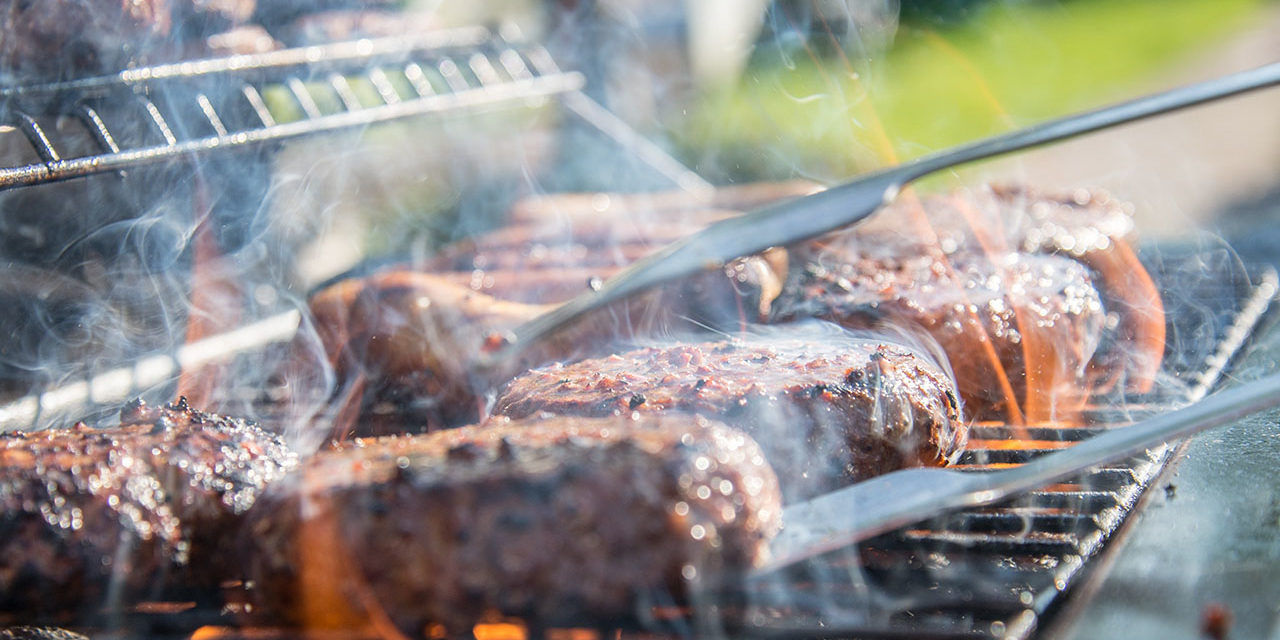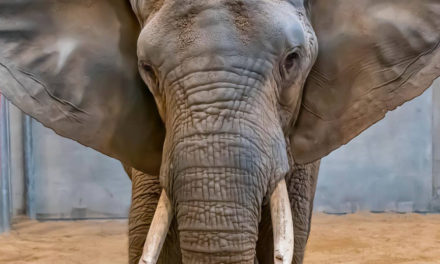Tips from your friends at Kettle Range Meat Co. – by Nikki Barr
So long shovel, hello grill! It’s time to swap those inclement weather accessories for the star of the summer show. In an age of social media, it’s become easy to show off our cooking skills. Just a quick snapshot and share gets friends drooling with questions like, “How’d you cook that? What type of marinade did you use? Looks good, can I get the recipe?”
These responses boost our inner culinary ego, but nothing makes us feel quite like the master of summer than when a nosey neighbor, beckoned by the aroma of a fiery grill, peeks over the fence to ask, “Whatcha grilling”?
We’re here to put you on the neighborhood map this summer. With these tips, you’ll be the bigwig of barbeque, the sultan of the smoker, the chieftain of charbroiling, the guru of grilling. Yeah, you get it. Welcome to grilling season, Wauwatosa! Let’s get started!
Choosing a Cut
It’s Saturday morning and you find yourself drooling over the fresh case at your favorite neighborhood butcher shop. The pressure mounts as you know you’re about to be asked, “What’ll it be today?” Relax! While choosing the right cut can make or break your cookout, it’s an easy task when you understand the anatomy of animal and cooking methods to ensure cuts reach their full potential.
Before we talk about anatomy, let’s talk about flavor. We’ve all heard the term, “beefy” or “porky” used to describe certain cuts. Of course it’s beefy. It’s beef, right? What we’re really talking about here is the presence of Umami. Considered the fifth taste (alongside salty, bitter, sweet and sour) Umami simply refers to the taste of protein and translates to “pleasant flavory taste” in Japanese. The presence and amount of Umami in meat is determined by the type of muscle and how much exercise it gets.
Now back to anatomy, imagine a herd of steers grazing happily on pasture. They’re continually walking forward to get the freshest and tastiest bites of forage available and relying heavily on strong muscles from the shoulders (think chuck roast) and chest (think brisket) to carry them across pasture. This constant exercise tones these muscles and increases blood flow to the area, thus resulting in the presence of Umami. The same is true for pork cuts like shoulder. The more weight bearing the muscle, the more porky or beefy flavor.
What’s important to remember about these flavor packed cuts, is that toned muscles need proper cooking methods to ensure they are tender. For smaller cuts like flank and skirt, you’ll want to cook hot and fast on the grill. For brisket and shoulders, you want a low and slow method, like smoking, to break down the strong muscle fibers.
So, what about the non-weight bearing muscles? So happy you asked! Cuts from the upper portion of the animal are what we in the grilling world might call fail-proof. Pork chops, tenderloin and ribeye are naturally tender due to their placement on the animal. These cuts are best cooked in a nice, safe place on the grill. Not too hot, not too cold, until they reach desired temperature.
Relax those muscles with a spicy massage
Don’t be so tense! It’s only dinner. Nothing helps loosen those muscles quite like a massage. Your meat agrees! A spicy rub down with a salt-based seasoning can help tenderize cuts like brisket and shoulder.
Salt is comprised of sodium and chloride ions that denature or unwind the proteins of highly worked muscles. These altered proteins can then retain more water, keeping the meat moist during the cooking process. Check out one of our favorite BBQ rubs, perfect for a smoked pork shoulder.
Ingredients:
- ¾ cup kosher salt
- ¾ cup brown sugar
- ¼ cup smoked paprika
- 4 Tbsp garlic powder
- 6 Tbsp ancho chili powder
- 1 Tbsp ground cumin
- 2 Tbsp ground black pepper
- 2 tsp cayenne pepper
- 4 tsp coriander
Direct or Indirect?
The delicate balance of hot and cool, the height of the flame and the distance from the sun. When you fire up the grill, you’re creating your own cooking universe. You are truly the master, controlling the fiery sun and strategically placed meat planets for optimal cook times and temperatures.
Okay, so maybe it’s not that extreme, but cooking too close or too far away from your heat source can ruin a perfectly well-planned dinner. Check out these tips for setting up your coals and recommended methods for popular cuts.
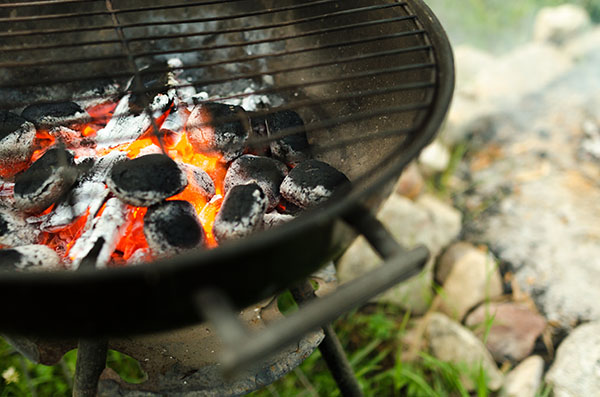
1. Start Fresh
Remove any existing ash from your grill as debris can block vents needed to control temperature.
Clean grates with a wire brush to remove any residue.
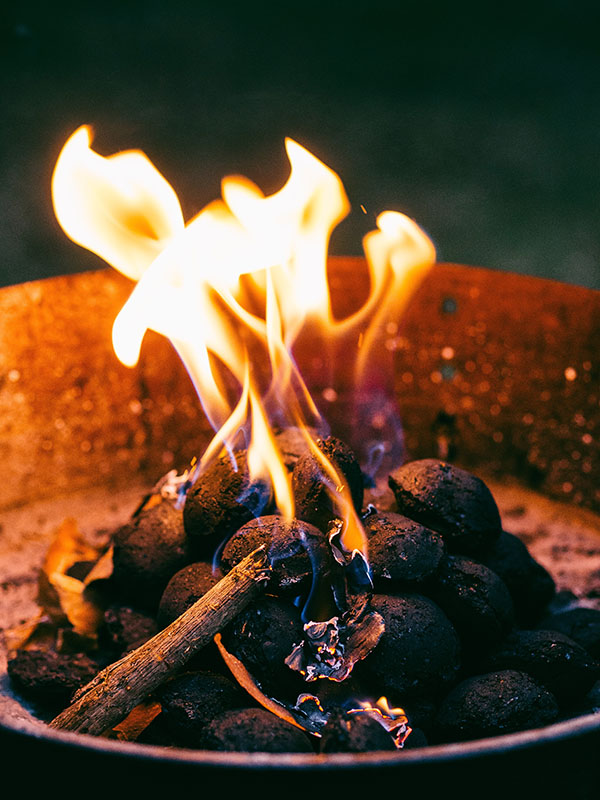
2. Create Your heat Source
Chimney starters are an easy and efficient way to light your charcoal briquettes. Just follow these easy instructions:
- Flip chimney over and place pieces of newspaper in the bottom
- Fill chimney with charcoal (a standard chimney will hold 100 briquettes. You’ll only need about half than that 3-4 individual cuts)
- Light newspaper with matches through the vents in the chimney
- Wait until the charcoal has turned to white ash and dump into grill.
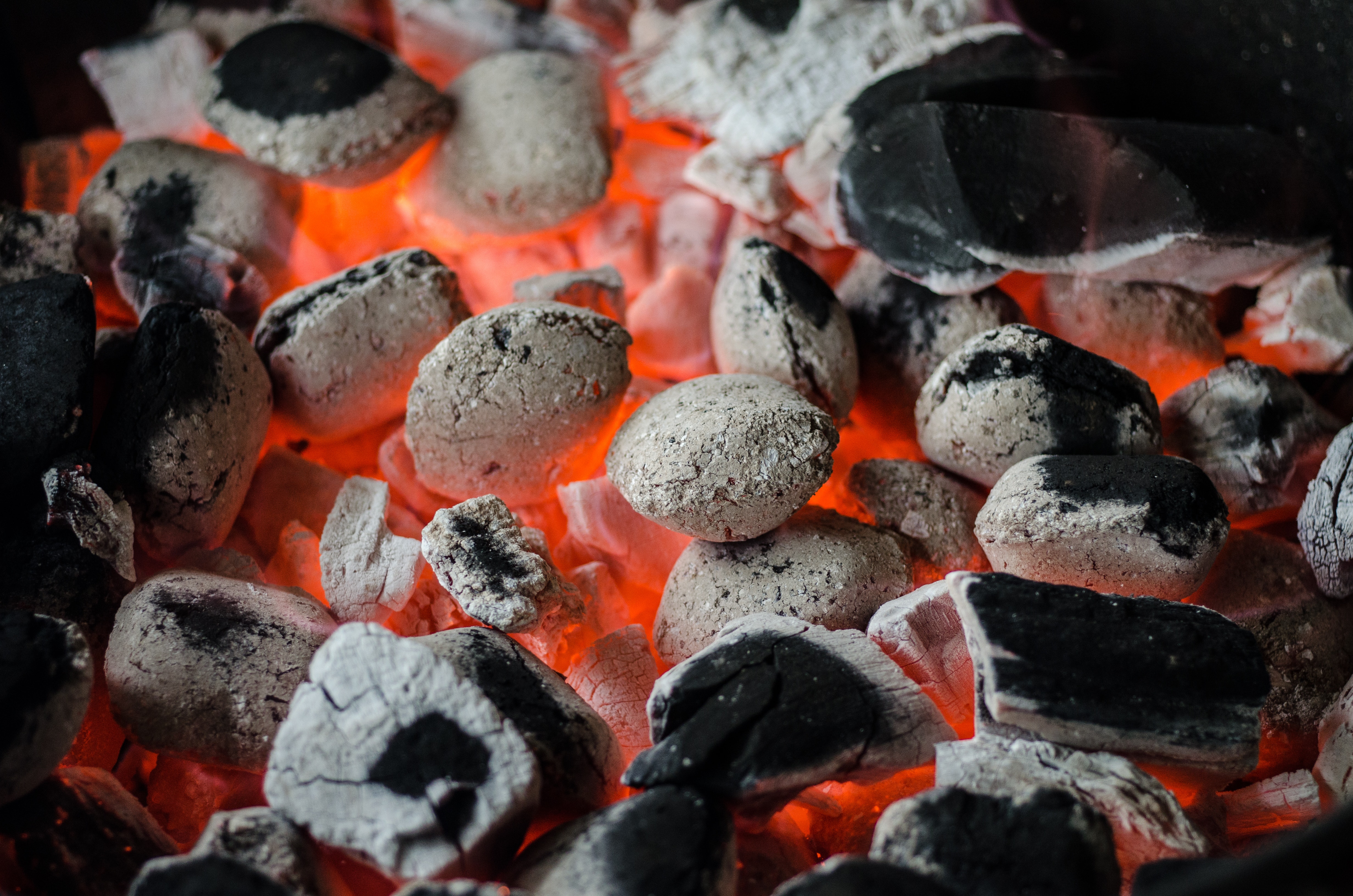
3. Arrange your coals
There are a few great ways to create heat zones on your grill. You’ll want to have an area where meat can be cooked directly over the flame and an area where meat can be moved if it’s getting too charred or requires a longer cook time. If you stack coals in the middle of your grill, make sure you’re leaving enough room around the outside for a cool resting place (8-10 inches).
Best cuts for indirect (flipping as needed):
Pork Tenderloin (around 30 minutes or 145 degrees)
Chuck Roast (around 1.5 – 1.75 hours for 2lb. roast at 145 degrees or medium)
Chicken Legs (around 25 minutes or 165 degrees)
Best cuts for direct:
Beef Skirt Steak (about 2 minutes each side or 135 degrees for medium rare)
Pork Shoulder Steaks (about 4 minutes each side or 145 degrees)
Chicken thighs (6 minutes skin side, 5 minutes meat side or 165 degrees)
 Use Your Thermometer
Use Your Thermometer
Even the most experienced grillers don’t head for the yard without a trusty meat thermometer. Follow these easy guidelines for the perfectly cooked centerpiece. Remember, pork is best and can be served a little on the pink side. Especially if sourced from a trusted, local retailer.
Poultry: 165 degrees
Pork: 145 degrees steaks, chops and individual cuts
205 degrees for smoked cuts like shoulder
Beef: Rare 125 degrees
Medium Rare 135 degrees
Medium 145 degrees
Medium well 155 degrees
Well 160 degrees
205 degrees for smoked cuts like chuck and brisket
Underrated Cuts We Love
Let’s hear it for the underdogs! Those beautiful little hidden meat gems that are often passed over for a thick cut beef ribeye or pork tenderloin. These cuts are unique and easy to find at a whole animal butcher shop like Kettle Range Meat Company. Check out our favorite underrated cuts!
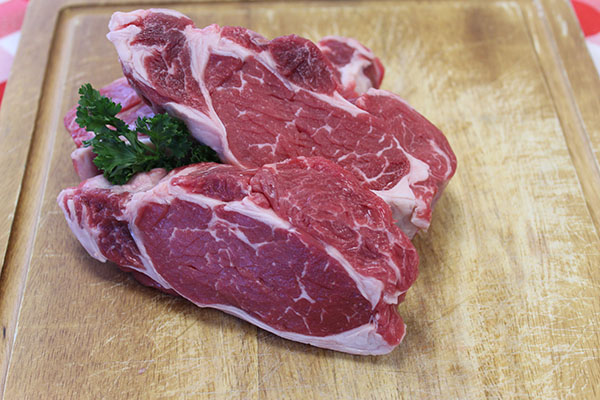
The Chuck Eye
Often called the “poor man’s ribeye” the chuck eye steak is located at the rear of the steer’s shoulder just in front of the ribeye primal. Because of its close proximity to the ribeye, it shares many qualities and characteristics. It’s tender and flavorful just like it’s close relative, but petite in comparison. A perfect meal for one!
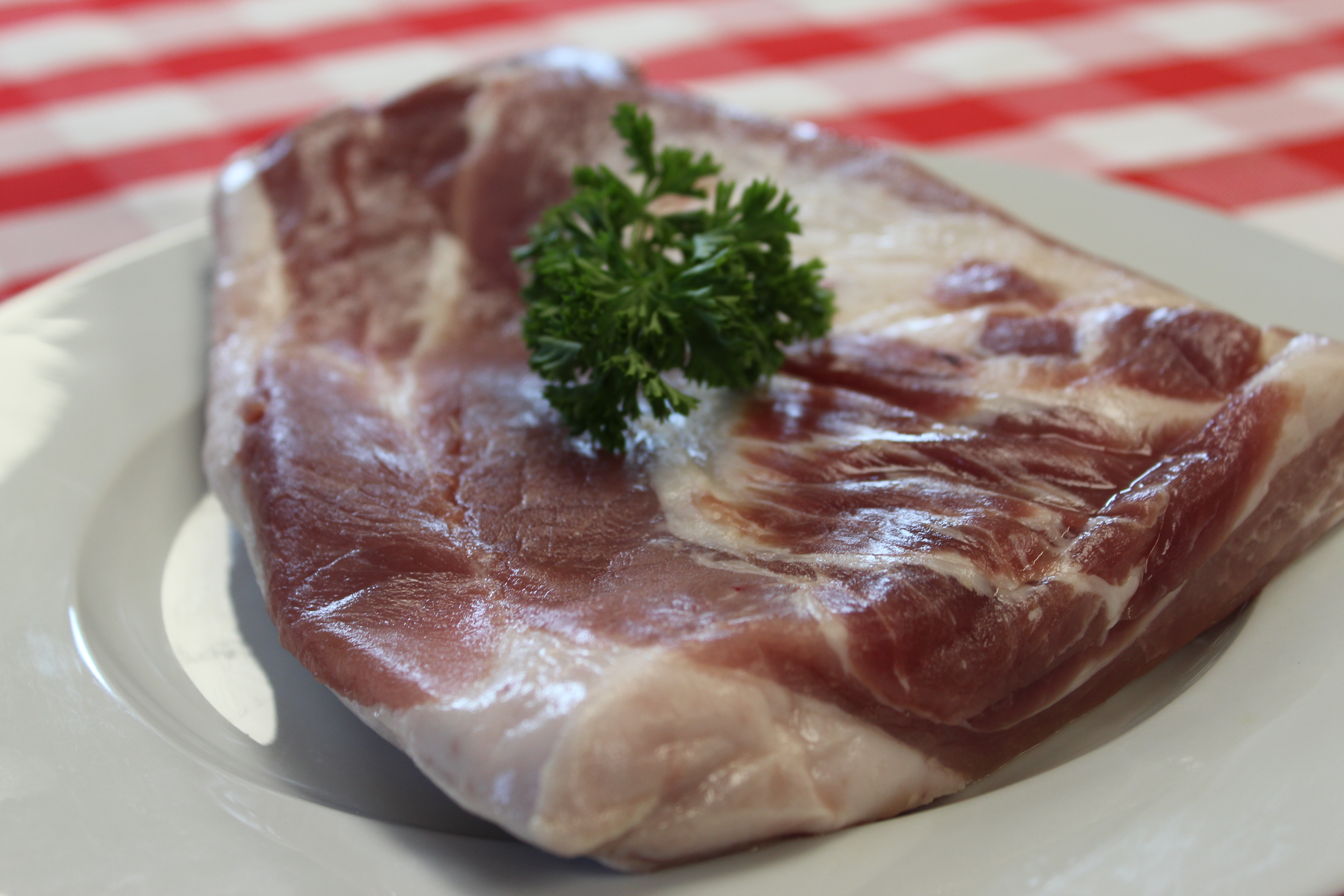
Pork Brisket
Not quite as popular as the beef brisket, this cut is just as tender and flavorful. It responds well to a slow and low environment on the grill or a perfect fit for your smoker.
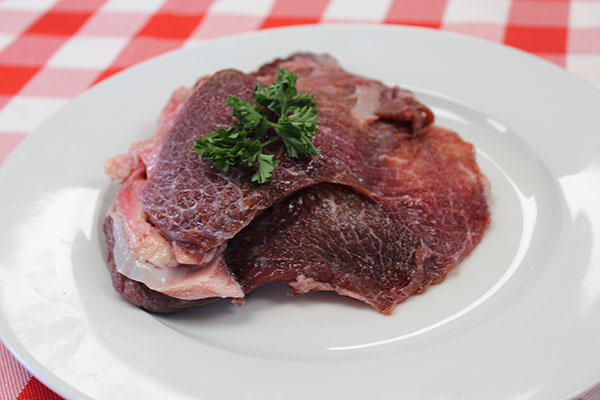
Beef Cheeks
Talk about a well worked muscle! Cows can chew up to 7,000 times per day! This means a ton of flavor for those cheek muscles. For best results, chargrill or cook direct for up to 40 minutes with constant movement. Try this as a substitute protein for beef tacos!

Pork Skirt Steak
Cut from the inside of the spare ribs, this cut is extremely versatile. Give it a nice soak in your favorite marinade and a hot, fast ride on the grill. Serve over rice and veggies or top a fresh salad.

